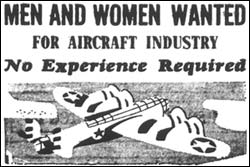 Local Member of Parliament, J. L. Ralston, appointed B. W. Robinson (MLA) and Lt-Colonel J. A. MacPhee (M.D.) to act as convenors. Their task was to arrange public meetings in Prince County in order to solicit volunteers who would carry out the registration.
Local Member of Parliament, J. L. Ralston, appointed B. W. Robinson (MLA) and Lt-Colonel J. A. MacPhee (M.D.) to act as convenors. Their task was to arrange public meetings in Prince County in order to solicit volunteers who would carry out the registration.Citizens across Canada were informed that the process would take about fifteen minutes of their time. A questionnaire was published for study and preparation of answers. There was considerable press coverage of how and where to register. "This is war time. The work is very important. Let us make a good and complete job of it."
Registration took place 19-21 August 1940. Each person sixteen years or older was issued with a registration certificate that was to be carried at all times to be shown on demand to any person in authority. Failure to do so made one liable to a fine.
The information gathered was used by the Dept of Labour to determine the best use of manpower. Men, and later women, were given special training for war industries throughout Canada. In Summerside the first notice for training appeared in April 1941 and encouraged men between 18 and 30 to apply for courses in Nova Scotia or New Brunswick. In September 1942 registration of all women aged 20-24 was undertaken. Locally it took place in the MacArthur building on Summer Street. Another registration was made in March 1943 for all graduate nurses. There were reminders in the press that everyone must report a marriage, a change of address, or turning sixteen.
As war industries began to utilize workers, a shortage was created in some critical areas. The government was forced to take control by creating a National Selective Service under the Department of Labour. It limited the number of male employees in certain occupations thus freeing men for military service or work in vital industries. Men and women in civil service or teaching occupations were required to remain at their work.
In August 1942 it was learned that Summerside would have one of the eleven Selective Service offices to be established in the Maritimes. C. B. Morris was appointed manager and Blanche Hogg was hired as stenographer. The first office was set up on the second floor of the Post Office. It was later moved to the Journal building at the corner of Water and Queen Streets in May 1943.
The office's responsibility was to track employment and enforce regulations. One of these regulations stated, "No employer will be allowed to hire or discharge employees without first getting permission from the National Selective Service authorities and no employee will be allowed to leave and take up a new position without obtaining a permit."
Beginning in February 1943, all employers were obliged to submit reports to government about the classification of their workers. That same month it was announced that regulations had been consolidated and revised in an effort to accomplish "complete utilization of Canada's manpower and womanpower." The Compulsory Employment Transfer Order of May 1943 laid out the specific "nonessential employments" and directed employees and employers in the steps to be taken.
Notices for workers needed in war industries appeared in the local paper in the summer of 1943. By that time manpower in many areas was becoming critical. The shortage of coal miners was considered a national emergency. Construction workers were in demand locally and many projects around the town were done slowly or not at all due to the lack of men. When the dehydration plant opened in the community in 1943, mainly women were hired.
Many young women were employed in small wartime industries in PEI or on the mainland. They also took jobs as bank tellers and retail clerks, as well as working in the traditional roles of teachers, nurses, and secretaries. However, most women remained in their homes caring for their children and running households, often in the absence of their husbands. They formed the backbone of the wartime volunteer movement through a variety of service organizations.
In rural PEI there was a need for farm workers, particularly at harvest time. In the summer of 1943 teachers worked on farms during their holidays and in 1944 store clerks were pressed into service. Air force men from the local station assisted with haying and soldiers were brought in from the mainland to help with the potato and turnip crops. In the summer of 1945 the need was again critical. Unemployed men were required to report to the National Selective Service for farm work and anyone already in agriculture was to remain there. In October of that year, 100 potato pickers were brought to Prince County from Nova Scotia.
New regulations were introduced as the wartime period came to an end. In June 1945 women no longer needed to seek permission to accept a job, but employers were obliged to have posted that job at the employment office. Citizens were advised not to move to any designated congested area such as Hamilton or Vancouver without a permit.
As servicemen returned to civilian life the Department of Labour published notices reminding employers that they must reinstate former employees
| Related Articles | Related Images | Related Memories | Related Websites | Inflation Calculator |
| Home Page | Site Map | Contact Us | Wyatt Heritage Properties |












